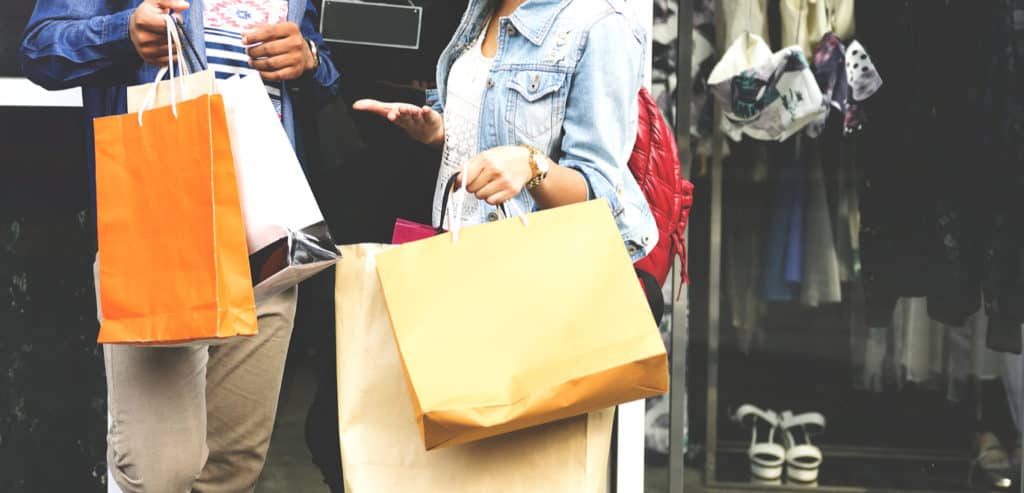The apparel category has come a long way towards gaining consumer confidence online. With rich multimedia content, generous return policies, free shipping offers, in-depth customer reviews and ‘reserve in store’ options, it is no longer a category that requires going to a retail location to browse or confirm a purchasing decision. However, there are still many brands and retailers that could benefit from a more thorough understanding of how shoppers make decisions in order make their advertising efforts and ecommerce sites as effective, and profitable, as possible.
According to eMarketer, 2013 online apparel sales were $44.7 billion accounting for 17.6% of the all U.S. ecommerce sales. Online apparel sales are expected to nearly double to $86.0 billion by 2018. These figures are impressive on their own, but what they don’t take into account are the nuances of consumer shopping behavior online, including what makes a consumer decide to purchase a product, research it or simply leave it in a shopping cart. Understanding how consumers shop online, and why they make the decisions they do, can make a tremendous difference in the ability of a brand to drive traffic to their product detail pages, convert the browsers into buyers, and build customer loyalty. Based on research conducted by HookLogic across its Retail Search Exchange network, which analyzed more than 11 million online transactions representing more than $1.2 billion in sales, the following considerations are key in helping to improve the purchase power of an apparel shopper.
Adapt to a Short Purchase Decision Cycle
Interestingly, consumers in the apparel category exhibit almost exactly the same purchase decision cycle as the average shopper across other product categories. Generally, they don’t consider apparel purchases more than a few weeks out, and begin thinking about their purchase at a maximum of a few days or even hours beforehand. This is why retailers and brands should understand their purchase decision cycle and work with it.Retargeting efforts should have shorter time spans and reminders about abandoned shopping carts should be sent quickly in order to keep purchasing intent top of mind.
Images Are a Key
Not surprising given the recent success of many visually based social media channels, more than 60 percent of apparel shoppers chose product images as a top three influence on purchase, which is 1.5 times the average across other categories. Images can be a major factor in a shopper’s decision to purchase a specific product from one site over another. Consumers want detailed images that show exactly what the item looks like, including how the product might look on them. It seems obvious, but many retailers and brands still have a long way to go in this area. Multiple, high-res shots of items should be included, incorporating shots with models if at all possible. Consumers shouldn’t have to wonder how big that watch would look on their wrist, or whether that skirt is intended to hit above or below the knee.
Conversion Value isn’t Always Dependent on Traffic
Research found that specific sub-categories matter when looking at online shopping behavior. While clothing drives 70 percent of the total apparel category value, and 84 percent of the category volume, there are nuances among the other sub-categories that bear noting. For example, shoes stand out as having significantly higher value than volume and traffic. Consumers that are focused in their searches on shoes typically spend a significant amount of money, regardless of lower traffic. This differs from the wallets and handbags category, where traffic is higher than both value and volume, indicating extensive searching before purchase.
Online Add-Ons Make a Difference
Our study revealed that consumers in the apparel category spent $206 per month, which is significantly more than the $168 per month average for all products purchased online. In addition, a consumer on average purchases two to three items per online shopping trip. In the apparel category that number jumps to four items. Unlike most other online shopping categories, consumers shopping for apparel rarely stop shopping when they’ve found the item they were initially seeking. This is an opportunity for the retailer to garner the interest of the shopper, and get them to add additional items at the time of purchase. Whether this is through targeted advertising that prompts similar or compatible products, or an understanding of the buying habits of the shopper to be able to prompt add-ons or other related products to try at the time of purchase.
These nuances in apparel shopping can help retailers and brands take advantage of a multi-billion-dollar industry, and maximize their efforts to entice online shoppers. If followed these tips can help beat the competition, even ones that sell the very same products.
*This article includes data that HookLogic analyzed from more than 11 million online transactions representing more than $1.2 billion in sales over the period from December 13, 2014 through January 26, 2015 across the HookLogic Retail Search Exchange network. Also included in the analysis is reported behavior survey data from a 500-consumer study HookLogic commissioned from MarketTree in May 2014.
HookLogic is an online marketing firm.
Favorite